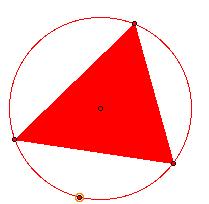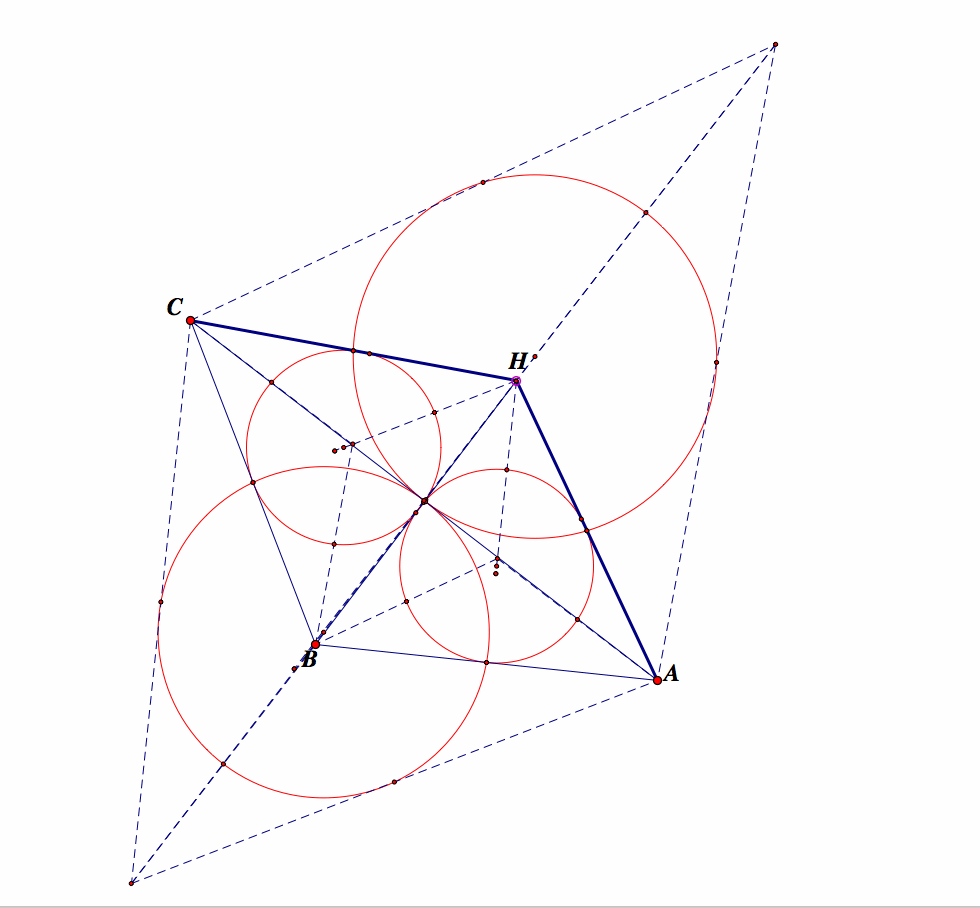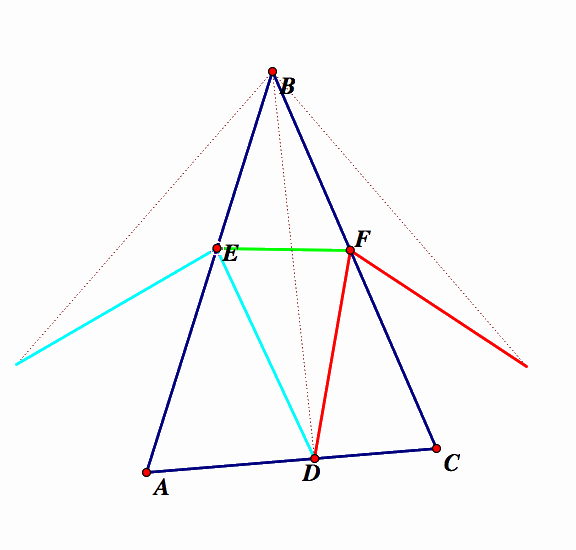
 Brent Robertson
Brent Robertson
 Brent Robertson
Brent RobertsonThe orthocenter is the point of concurency of the three atlitudes of any triangle. This write deals with many interesting relationships between the concurency and the atlitudes that create it. Here is a link to a sketchpad drawing with a triangles orthocenter and three more orthocenters using the orthocenter and two vertices from the original triangle: LINK TO SKETCH
One of the first things we did was construct the 9 point circle on each of the four triangles. My first conjecture was that it looked like a ball of yarn! I was able to manipulate and get this:

We may be able to prove a kite if we can show 2 pairs of consecutive sides congruent, or diagonals not bisecting but perpendicular. Quadrilateral CHAB can be proven to be a rhombus because the 9 point circles are congruent with the point of concurency and the inscribed circles will inscribe congruent triangles CHBand AHB. From there we have four congruent sides by SSS congruence postulate and parallel sides by the converse of alternate interior angles congruent with transversals CA and HB.
Or you can collapse the triangles entirely:

I ultimately chose to tackle problem 15 finding the inscribed triangle with the smallest perimeter, partly because of the reflections that are used in its proof and mostly because Dr. Wilson made a nice presentation on it earlier in the semester. Remember, imitation is the most sincere form of flattery. Seriously though here is a niftly little proof that uses reflections to make the smallest perimenter in a triangle. Upon research I found that this triangle with the minimal perimeter is also the orthic triangle, and it is formally known as Fagnanos problem. Fagnano is an 18th century mathematician who first proposed a solution using calculus. My attempt will be geometrict using reflections and the orthic triangle.
I've made an acute triangle ABC and inscribed arbitrarily DEF. By reflecting each segment across the side of the original triangle we get close to our solution:

Sinnce the shortest distance between two points is a straight line, if we can manipulate the reflection to form a straight line then we should have a minimum perimeter.

Nice solution, but how can we prove that triangle DEF is the orthic triangle?
RETURN to Brent ROBERTSON HOME PAGE